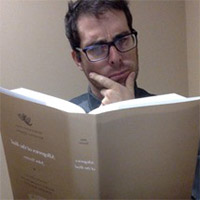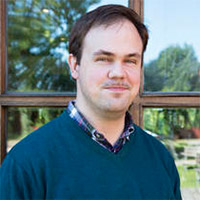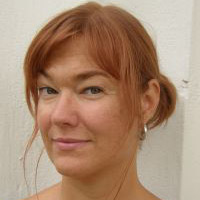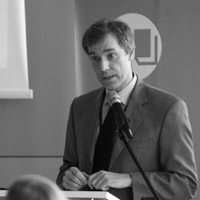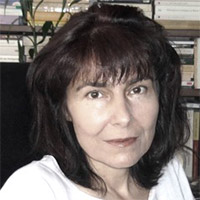Research Network "The receptions of Byzantium. Towards the new field of reception studies"
Network participants
Helena BodinHelena Bodin is Associate Professor and Senior Lecturer in Literature at the Department of Culture and Aesthetics, Stockholm University, and at The Newman Institute in Uppsala. She is a member of the Collegium of the Swedish Research Institute in Istanbul and the Nordic Byzantine Network. Her main research interest concerns connections between modern literature and the Byzantine Orthodox Christian tradition from the various perspectives of aesthetics, translation studies, cultural semiotics, and intermedial studies. She is one of the editors of Byzantine Gardens and Beyond (Uppsala University 2013) and has published monographs in Swedish on Orthodox icons and their ekphraseis in late modern Swedish literature and culture, Ikon och ekfras (Artos 2013) and on modern Swedophone uses of Byzantium (Norma 2011). Ever since her PhD dissertation on the Swedish modern poet Hjalmar Gullberg and his translation of Romanos Melodos’ kontakion to the Birth of Christ (Stockholm University; Norma 2002), the study of Byzantine hymnography has often been in focus, together with the study of travelogues and the notion of Byzantinism. She has especially been interested in the use of Byzantine cultural traditions and Orthodox Christian theology in poetry and novels by modern Swedophone authors such as Hagar Olsson, Gunnar Ekelöf, Ella Hillbäck, Tito Colliander, Lars Gyllensten, Ingemar Leckius and Birgitta Trotzig, as well as in essays by Julia Kristeva, Jean Baudrillard and Jean-Luc Marion. | |
Adam J. GoldwynAdam J. Goldwyn is Assistant Professor of Medieval Literature and English at North Dakota State University. His research interests are in East-West literary relations in the Middle Ages, the reception of Classical Greek literature (particularly the Trojan War) and the application of contemporary literary theory to Byzantine texts. Recent publications include a translation (with Dimitra Kokkini) of John Tzetzes’ Allegories of the Iliad (Harvard University Press: 2015) and “Towards a Byzantine Ecocriticism: Witches and Nature Control in the Medieval Greek Romance (BMGS 39.1 [2015]: 66-84). | |
Olof HeiloBorn in 1982. Studies in Ancient Greek and Arabic at the University of Lund and Farsi at the University of Copenhagen 2001-2005. Frequent travels in the Eastern Mediterranean; recurring seminar participant, collegium member and scholarship holder at the Swedish Research Institute in Istanbul since 2004. PhD from the University of Vienna in 2010, teacher at the CMES in Lund and researcher based in Vienna (Institute of Byzantine and Modern Greek Studies) from 2012. Tracing my interest in Modern European history back to the Classical and Islamic worlds, my dissertation came to focus upon the convergence of the two latter in the Middle Byzantine and Early Islamic period. I am working with history both as a field of studies in itself and as a narrative instrument in the formation of modern and pre-modern identities. | |
Ingela Nilsson2001 PhD in Greek, Göteborg University 2002-2004 Visiting researcher, Freie Universität Berlin 2004-2006 Assistant Professor in Byzantine Studies, Uppsala University 2006-2009 Pro Futura fellow, Swedish Collegium for Advanced Study 2007 Associate Professor of Byzantine Studies, Uppsala University 2008-2009 Professeur invité, École des Hautes Études en Sciences Sociales, Paris 2010 Professor of Greek, specializing in Byzantine Greek, Uppsala University Research interests The links between ancient and Byzantine literature, as considered from narratological and transtextual points of view The relation between word and image in Byzantium Historiographical writing and fictional strategies Byzantine twelfth-century literature The image of Byzantium in post-Byzantine Europe Current projects Study of the authorship and literary production of Constantine Manasses (12th c.) Critical edition and translation of the ekphraseis of Constantine Manasses, in collaboration with Charis Messis, Paris A Brill Companion to Byzantine Satire (forthcoming 2017), discussing questions of satire, parody and humour in Byzantium, in collaboration with Przemyslaw Marciniak (University of Silesia) | |
Steven SmithSteven Smith is Associate Professor of Classics and Comparative Literature at Hofstra University. He is currently writing a book on the Cycle of Agathias and the literary culture of Byzantium during the age of Justinian. His previous books are Man and Animal in Severan Rome: The Literary Imagination of Claudius Aelianus (Cambridge University Press, 2014) and Greek Identity and the Athenian Past in Chariton: The Romance of Empire (Barkhuis & Goningen University Library, 2007). | |
Paul StephensonPaul Stephenson, Professor, Head of School, History and Heritage, University of Lincoln, Brayford Pool, Lincoln, Lincolnshire, LN6 7TS, UK, +44 (0)1522 88 6340, http://lincolnhistoryheritage.wordpress.com, http://staff.lincoln.ac.uk/pstephenson, http://www.lincoln.ac.uk/home/hh | |
Vesselina VachkovaDr. Vesselina Vachkova is a lecturer at the National Academy of Art, Sofa and teaches ancient and medieval history and culture at the National School for Ancient Languages and Cultures, Sofia. She is the author, co-author and editor of numerous scientific collections, articles, books and of a dozen monographs, most important of which are One Road, One Temple, One Palace and ten centuries of history (From Skretiska to Kostinbrod, 4-14 century). Sofia, 2015 (In Bulgarian English edition forthcoming); The Council of Serdica: 1670 years of history and interpretations. Sofia, 2013 (In Bulgarian); Serdica is my Rome. Political Role and Urban Image of Serdica (mid-3rd century – mid-6th century AD). Sofia, 2012 (In Bulgarian and English); The Blank Spaces in the Bulgarian Cultural Memory. Sofia, 2010 (In Bulgarian, English Summary); Traditions of Holy War in Early Byzantium. Sofia, 2004 (In Bulgarian, English Summary). Imaginary and Real Boundaries of Early Medieval Europe. Sofia University Press, 2001 (expanded edition in French, Sofia, 2006). General Fields of interests: Medieval religiosity and related to it contemporary cultural phenomena; the construction of urban identities and the memory of the city as part (and framework) of the individual, local, national and trans-local and supra-national identities. |

